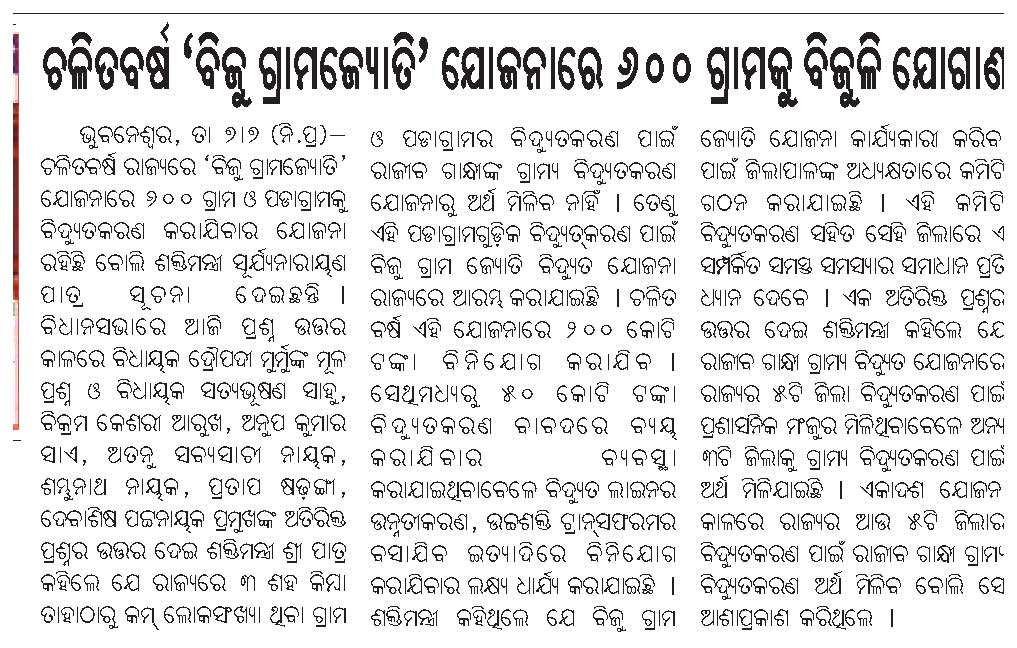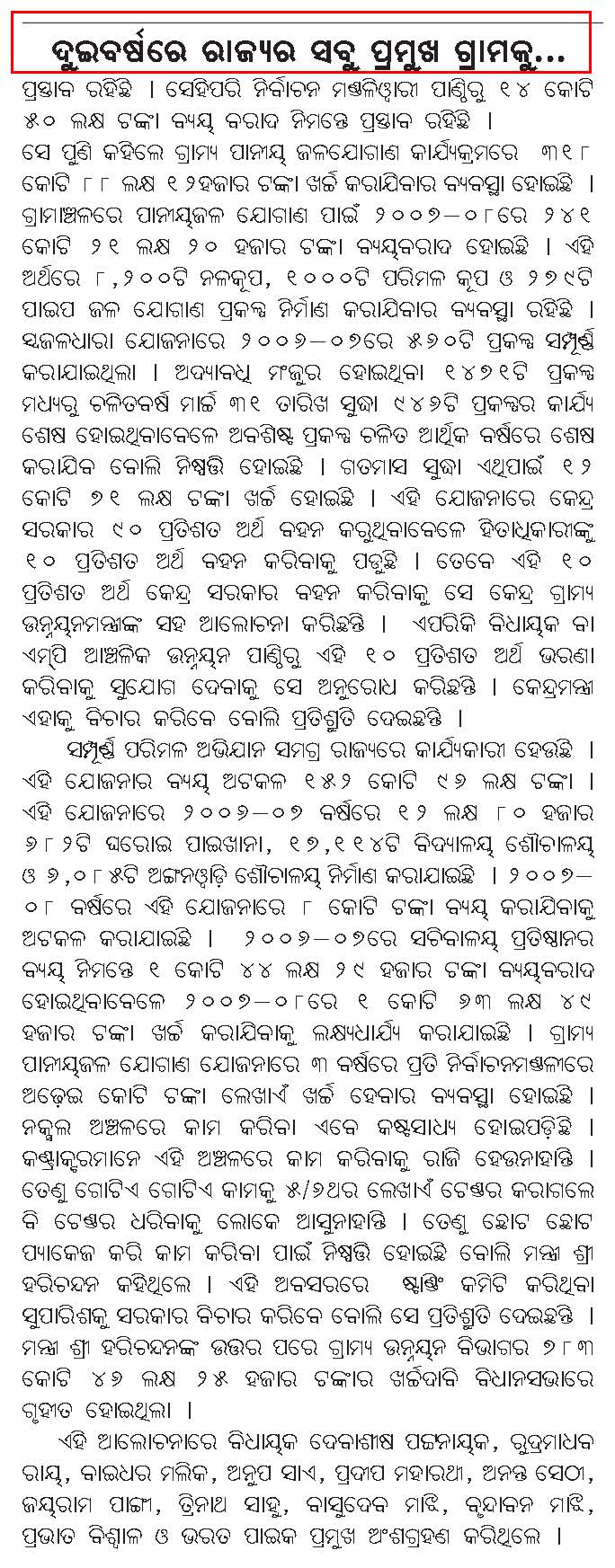For a population of 8 lakh, the Capital city has just 52,000 connections each catering to a family of five to six persons. …
Not only does coverage need keep pace with expansion, there is an increasing necessity to modernise the entire system. Realising the need, both Public Health Engineering Department (PHED) and Bhubaneswar Municipal Corporation (BMC) are busy chalking out a plan.
The proposal is to be placed for consideration under Jawaharlal Nehru National Urban Renewal Mission (NURM).
Currently, Bhubaneswar meets its demand mostly from Kuakhai river, while the infrastructure for water treatment and distribution have come up in different phases. Mahanadi too contributes substantially for the city’s requirements.
As of now, the existing supply system fully covers 17 wards (out of 47) with pipe-water supply while another 26 wards are partially covered. The rest are without any cover.
A study carried out on the system reveals that supply is intermittent, while pipelines have shrunk. The total length of pipelines – main and distribution – are about 900 km in length.
However, since most of these were laid in 1950s and 1960s, they throw up problems. While density of population has increased, the same has rendered existing supply lines inadequate.
This also explains why water distribution has not been uniform – quantity as well as pressure wise. Moreover, main transmission lines are now old and lead contamination with sewerage lines which has become a cause of concern.
Similarly, intake infrastructure, water treatment plants and pump houses are now old and need renovation. The city has seven water treatment plants built during the last four decades.
Statistics available with PHED says seven treatment plants were built in 1954, 1960, 1968, 1974, 1975, 1987 and 1996 which speaks volumes about the need to upgrade and replace them.
Of the seven plants, four are for Kuakhai with total capacity of 19.5 million gallons for day (MGD), while the two for Daya can treat 3 MGD water.
It is the Mundali Water Works which has the biggest capacity of MGD. It was built in 1996.
Another problem with the locations and capacities of storage reservoirs. In the city, there are 87 underground and over ground reservoirs while there are another 46 elevated service tanks.
The headache for these storage points is that they are not integrated.
The proposed modernisation plan will take into account the revenue model as user charges are not fixed as per consumption level.


